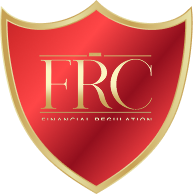Risk is an unavoidable aspect of investing. Every financial market, asset class, and investment strategy carries a degree of risk, but understanding the nature of these risks is essential for making informed financial decisions. Investors and portfolio managers must navigate two primary types of investment risks:
Systemic Risk – The risk that affects the entire market or financial system.
Idiosyncratic Risk – The risk specific to a particular company, industry, or asset.
Both risks play a crucial role in shaping investment strategies, portfolio diversification, and financial decision-making. By understanding their characteristics, causes, and mitigation strategies, investors can make more resilient and well-balanced financial choices.
In this article, we will explore:
✔ What systemic and idiosyncratic risks are.
✔ The differences between the two types of risk.
✔ How they impact investors and financial markets.
✔ Strategies to mitigate these risks in investment portfolios.
What is Systemic Risk?
Systemic risk refers to the risk that affects an entire market, industry, or financial system rather than a single company or sector. This type of risk is broad, uncontrollable, and often caused by macroeconomic factors, such as:
Economic recessions
Financial crises
Interest rate fluctuations
Geopolitical instability
Pandemics or natural disasters
Since systemic risk impacts all investments within a market, it cannot be eliminated through diversification alone. Investors must instead use hedging and asset allocation strategies to reduce their exposure.
The 2008 Global Financial Crisis: The collapse of the subprime mortgage market triggered a widespread financial meltdown, affecting stock markets, banks, and investment portfolios worldwide.
The COVID-19 Pandemic (2020): The outbreak led to stock market crashes, global recessions, and economic uncertainty, impacting nearly every sector.
The 2022 Inflation and Interest Rate Hikes: Rising inflation and central bank rate hikes created uncertainty across equities, bonds, and commodities.
Systemic risks are often unpredictable, making it crucial for investors to employ risk management techniques such as hedging, diversification, and safe-haven investments.
What is Idiosyncratic Risk?
Idiosyncratic risk, also known as unsystematic risk, is the risk associated with a specific company, sector, or asset. Unlike systemic risk, idiosyncratic risk does not affect the entire market, meaning it can be reduced through diversification.
Common causes of idiosyncratic risk include:
Company mismanagement or scandals
Regulatory or legal issues
Product recalls or failures
Supply chain disruptions
Industry-specific downturns
Since idiosyncratic risk is limited to a particular asset, investors can mitigate it by spreading investments across multiple sectors and asset classes.
Enron Scandal (2001): The energy company’s fraudulent accounting practices led to bankruptcy, but other companies in the sector remained unaffected.
Volkswagen Emissions Scandal (2015): VW’s stock price plummeted due to legal issues, while other automakers were largely unaffected.
Facebook (Meta) Data Privacy Issues (2018): Privacy breaches led to a decline in Meta’s stock price, but the broader technology sector remained stable.
By diversifying investments, investors can limit their exposure to idiosyncratic risks, reducing the impact of individual stock declines.
Systemic Risk vs. Idiosyncratic Risk: Key Differences
Both types of risk are significant, but understanding how they interact allows investors to build resilient investment portfolios.
How Systemic and Idiosyncratic Risks Impact Investments
Affects all asset classes: Stocks, bonds, real estate, and commodities experience volatility.
Triggers widespread losses: Investors may see declines across entire portfolios.
Reduces investor confidence: Market uncertainty leads to lower liquidity and higher risk aversion.
Affects only specific stocks or sectors: While some assets decline, others remain stable.
Provides opportunities for stock-picking: Investors can take advantage of mispriced assets.
Can be controlled through diversification: Investors can spread risk across industries.
By identifying which risks are systemic and which are idiosyncratic, investors can implement targeted risk management strategies.
Mitigating Systemic and Idiosyncratic Risks in Investment Portfolios
Diversification reduces idiosyncratic risk by spreading investments across different industries, sectors, and asset classes. For example, an investor holding technology, healthcare, and energy stocks is less vulnerable to a single industry downturn.
Allocating capital between stocks, bonds, commodities, and real estate helps reduce systemic risk. When stock markets decline, bonds and gold may provide stability.
Investors can hedge systemic risks using options, futures, and credit default swaps (CDS). For example, buying put options protects against stock market downturns.
During periods of high systemic risk, investors turn to safe-haven assets such as:
✔ Gold – A hedge against inflation and currency devaluation.
✔ Government Bonds – Lower volatility during financial crises.
✔ Defensive Stocks – Healthcare and consumer staples perform well during recessions.
Adjusting asset allocations based on economic conditions, risk tolerance, and market trends helps investors manage both systemic and idiosyncratic risks effectively.
Bringing It All Together
Systemic and idiosyncratic risks are fundamental concepts in investment management. While systemic risks affect entire markets, idiosyncratic risks are specific to individual companies or sectors. Understanding these risks allows investors to:
✔ Implement diversification strategies to reduce exposure to idiosyncratic risks.
✔ Use hedging and asset allocation to manage systemic risks.
✔ Balance risk and reward by investing in a mix of growth and defensive assets.
✔ Stay informed about economic trends, interest rates, and geopolitical events.
By combining these strategies, investors can protect their portfolios from unexpected downturns while maximising long-term financial gains. A well-diversified and risk-aware investment approach is the key to sustainable and resilient investing.
Risk management professionals deepen their understanding with the Investment Advisor Certification.
Be the first to know about new class launches and announcements.


Financial writer and analyst Ron Finely shows you how to navigate financial markets, manage investments, and build wealth through strategic decision-making.
